They kept campus going over winter break
When the hustle of the fall semester gives way to winter break, the work doesn’t slow down for many University of Wisconsin–Madison employees who do the essential work of keeping campus operations running smoothly. Meet some of the workers who make sure that buildings stay warm, residents stay safe, recreational facilities continue to serve the public and plant life continues to thrive even while students are on break.
It’s not easy staying green
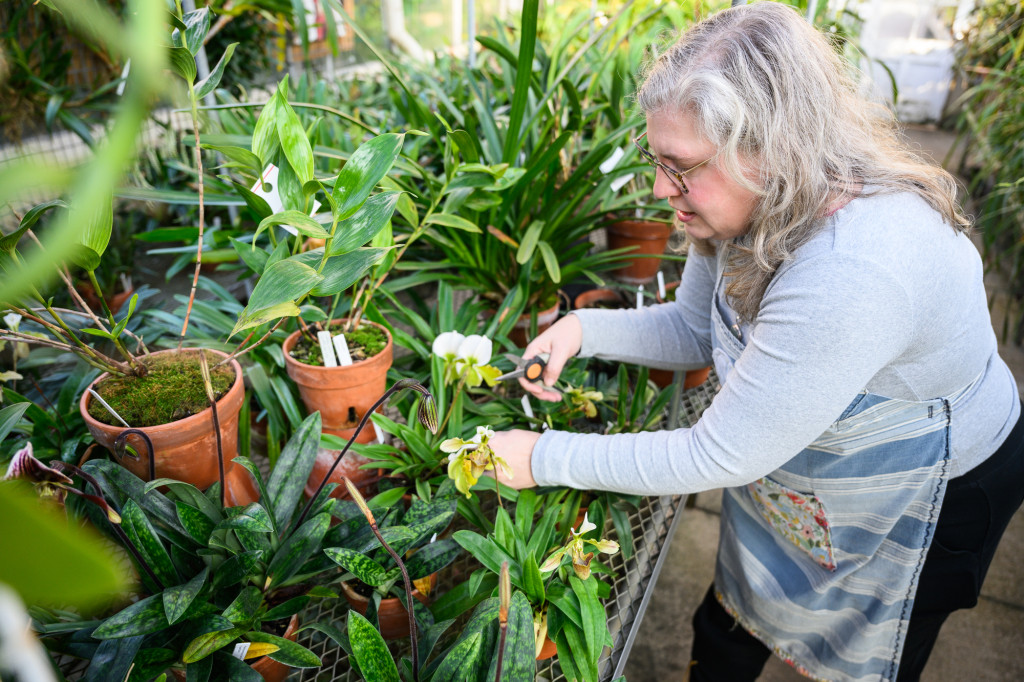
Ingrid Jordon-Thaden, director of the Botany Garden and Greenhouse, checks orchids for dying leaves, disease and pests at the Botany Greenhouse in Birge Hall. Photo: Althea Dotzour
Ingrid Jordon-Thaden, director of the Botany Garden and Greenhouse of the UW–Madison botany department, says plant life doesn’t slow down when campus life comes to a halt over break. “Plants don’t have a schedule that fits yours, and they will do their own activities and they’ll want to be repotted according to their own schedule,” she says. Jordon-Thaden and her colleagues manage more than 3,000 potted plants and 8,000 square feet of growth space, housing an extensive collection of more than 1,500 unique species of plants and 210 plant families. “You have to pay attention to and be responsive to the plants,” she says. She and her team also prepare for the coming semester, planting seedlings for use in labs and making other preparations.

A horticultural technician plants tomato seeds that will be ready for a student lab in Botany 130 at the Botany Greenhouse in Birge Hall. Photo: Althea Dotzour
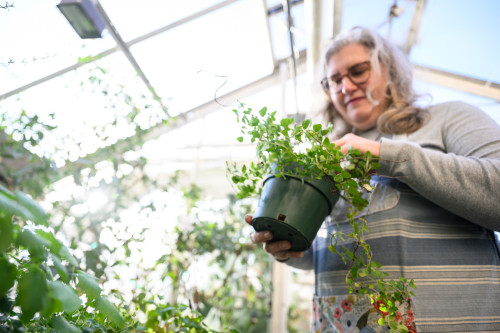
Jordon-Thaden checks plants for weeds, disease and pests. Photo: Althea Dotzour
Tending the ice
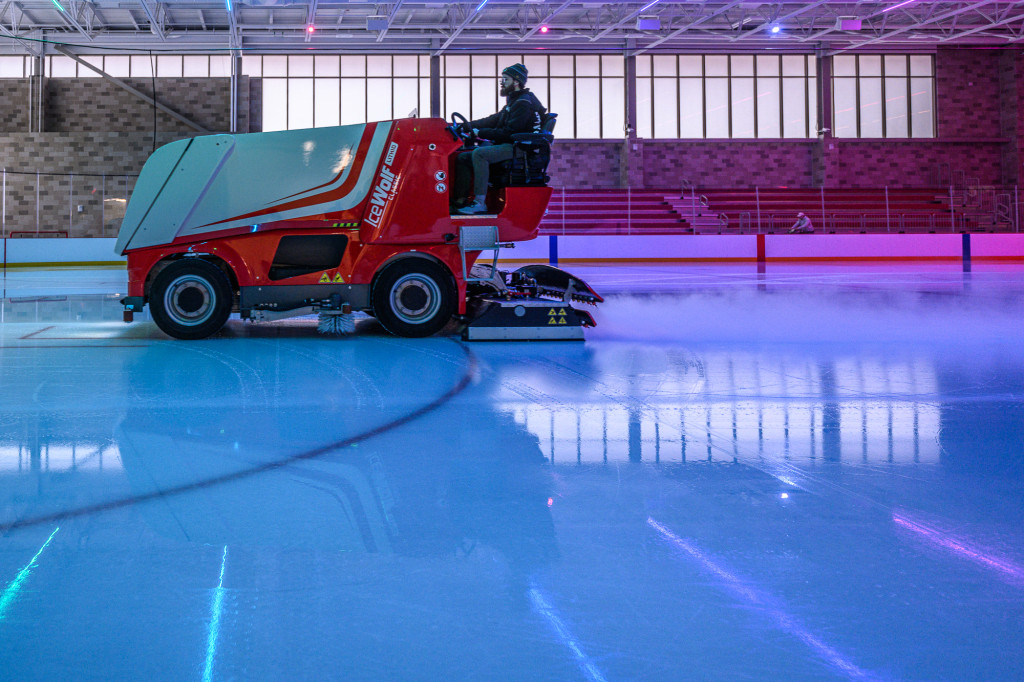
Matthew McGrory, ice technician, drives the electric Engo IceWolf ice resurfacing machine under colorful lights at the Sub-Zero Ice Center in the Bakke Recreation & Wellbeing Center. Photo: Althea Dotzour
Winter break is a busy time for the Sub-Zero Ice Center at the Bakke Recreation and Wellbeing Center. Bill Riggins, assistant director of ice operations, says hundreds of community members filled the rink during the holiday season, with Madison schools also on break and youth hockey season in full swing. “The other thing that made us super busy is there was no outdoor ice. It’s been warm, so people have had fewer alternatives for skating,” Riggins says. “We want to provide a lot of offerings to serve the community.”
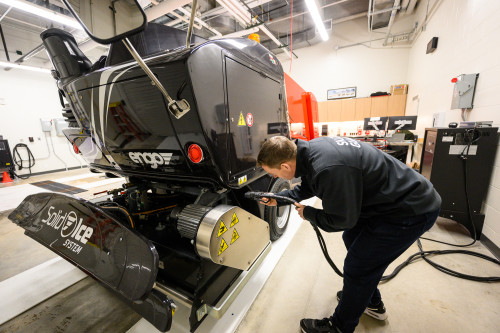
Bill Riggins, assistant director of ice operations, plugs in the electric Engo IceWolf ice resurfacing machine. Electric ice resurfacing machines are much better for the air quality in an indoor ice rink. Photo: Althea Dotzour
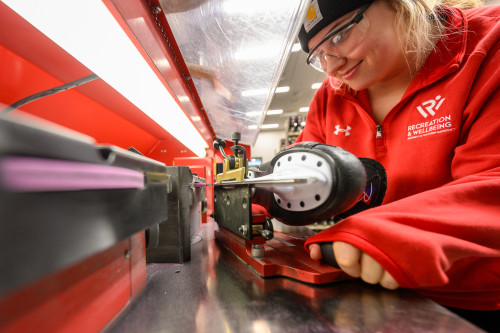
Kylie McInerney, graduate student in social work and supervisor at the ice rink, sharpens a hockey skate. Photo: Althea Dotzour
Support for tenants
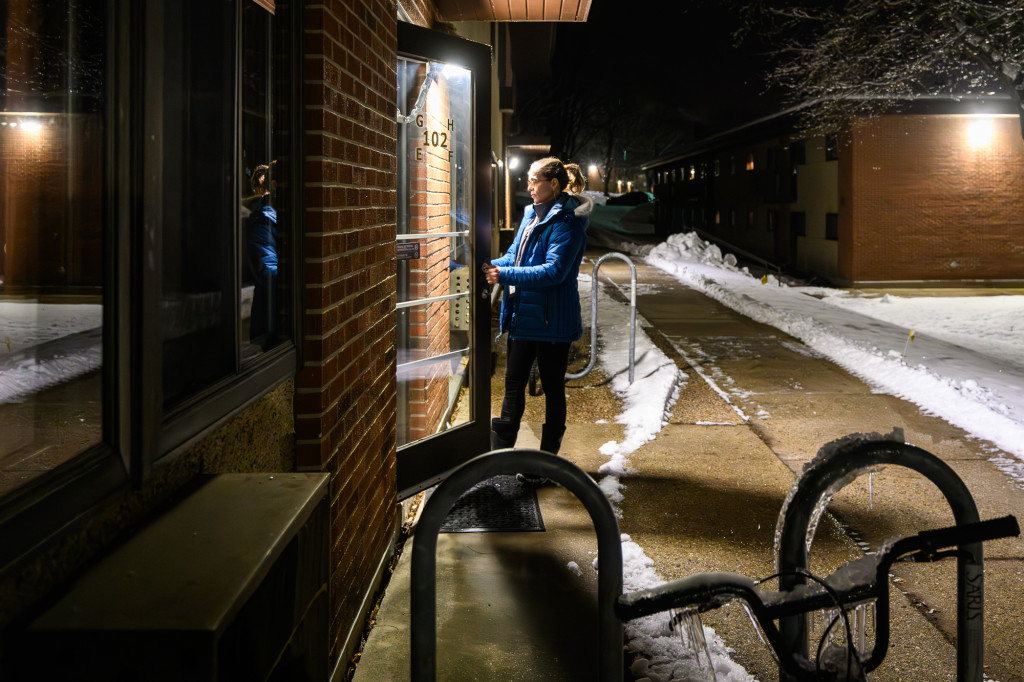
Gabriela Martinez Motta, resident manager in University Houses and Eagle Heights, unlocks a maintenance room in the Eagle Heights apartments on Jan. 11. Photo: Althea Dotzour
During break, many residents of University Apartments remain on campus. Resident managers like Gabriela Martinez Motta provide a full slate of services to them. A graduate student in the Plant and Agroecosystem Sciences program in the College of Agricultural and Life Sciences, Martinez Motta is there to welcome new tenants, to respond when residents find themselves locked out or have a leaky pipe and to manage community spaces and activities. “Each of us has neighborhoods, and we organize activities with that neighborhood with the idea of allowing the people to be in a space where they can get to know each other because sometimes it’s difficult to engage with your neighbors,” Martinez Motta says.
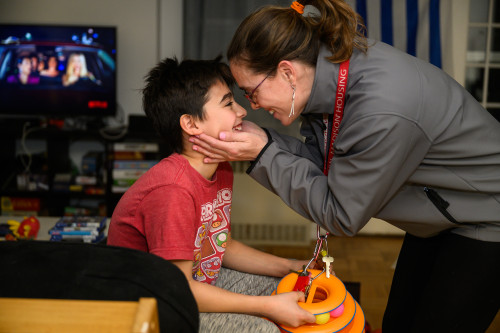
Martinez Motta connects with her son in her home in University Houses. On this evening, Martinez Motta is on call from 5 p.m. to 7 a.m. and between calls takes care of her three children. Photo: Althea Dotzour
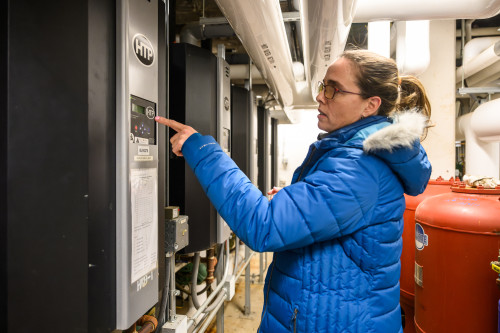
Martinez Motta examines the alarm system on the boilers in the basement of a University House on Jan. 11. When there is a problem with hot water or a boiler alarm goes off, resident managers like Martinez Motta get the call. They check the systems and bring in additional help if required. Photo: Althea Dotzour
Keeping it powered
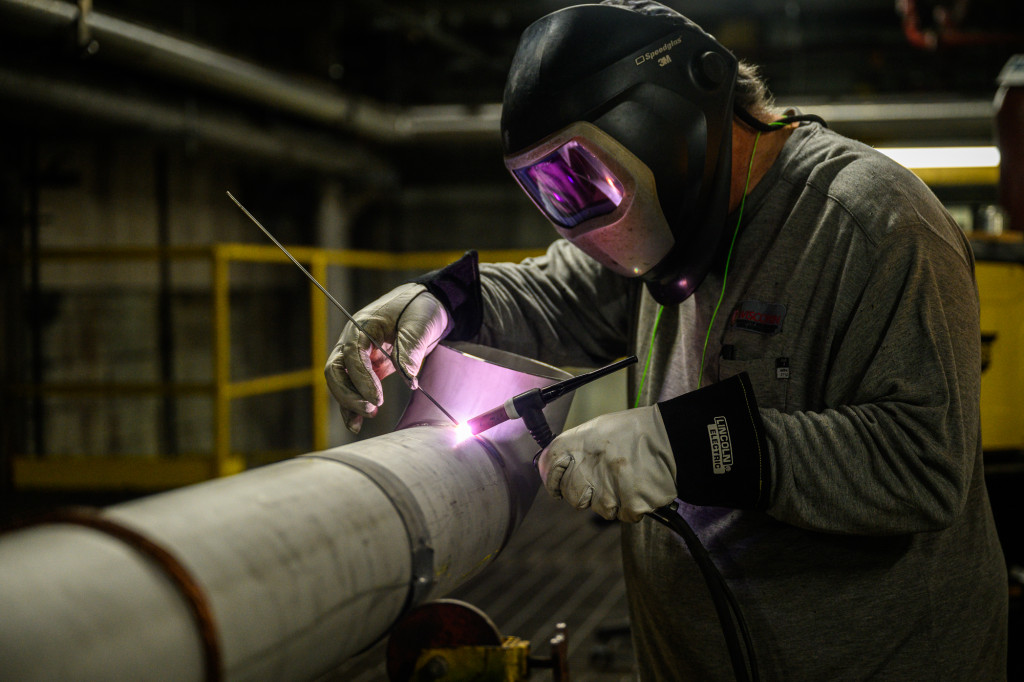
Robert Hodel, steamfitter, uses a torch to weld a pipe at the Charter Street Heating & Cooling Plant on Jan. 10. Photo: Althea Dotzour
Supplying power to the campus’s approximately 23 million square feet of facilities is a 24/7/365 job. Power plant manager Travis Thoeny and his team at the Charter and Walnut Street Heating & Cooling Plants make sure campus buildings stay comfortable, supplying steam, chilled water, compressed air, electricity and soft domestic water to the UW campus, as well as to UW Hospital and Clinics and other non-campus customers. “During the winter, we burn more gas than all the other 38-plus state owned facilities combined, due to the size of the load that we have on campus,” Thoeny says. “The Charter Street plant is the largest state-owned heating and cooling plant.”
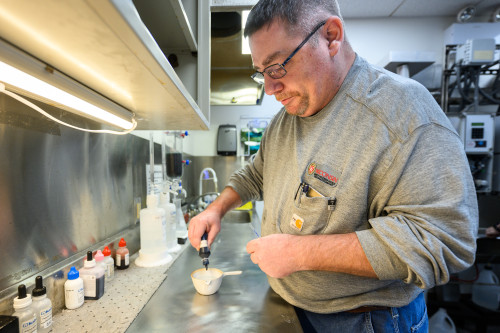
Mark Wentland, water treatment superintendent, tests the water hardness in the water lab at the Charter Street Heating & Cooling Plant. Wentland says they test the water 250 times per day. Steam goes out to heat and cool campus, and condensate comes back. Maintaining pH in the pipes is extremely important to boiler operation. Photo: Althea Dotzour
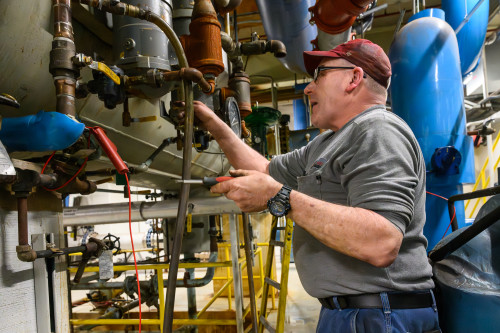
Harry Studebaker, power plant operator, uses a cleaning solution to remove build-up in pipes at the Charter Street Heating & Cooling Plant. Clean-in-place (CIP) is a method of cleaning the interior surfaces of pipes without major disassembly. Photo: Althea Dotzour
Fixing, inspecting machinery
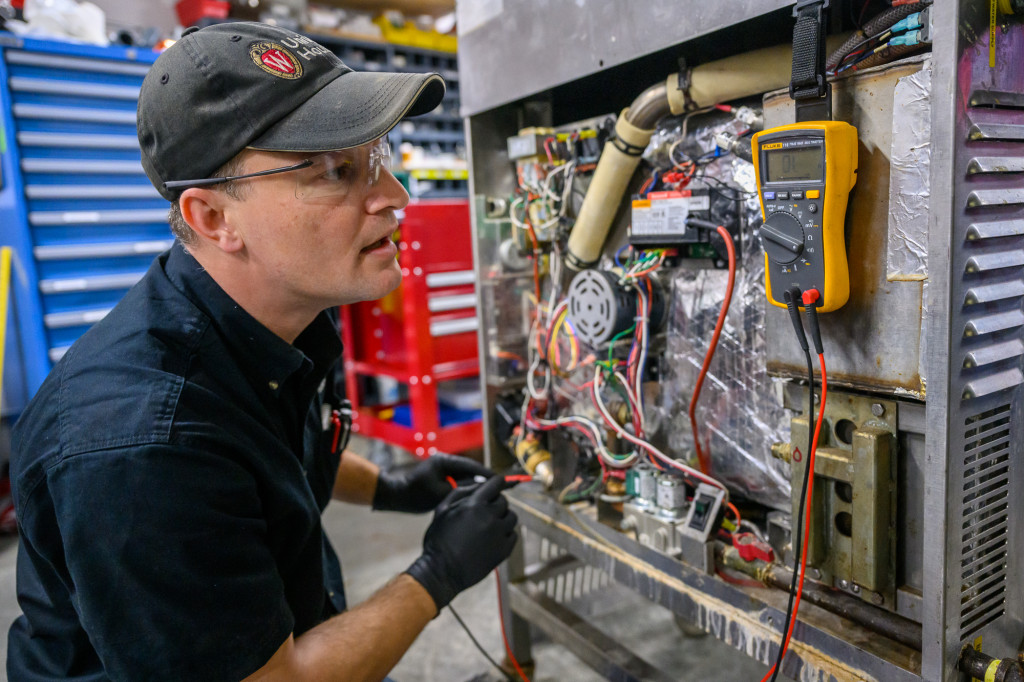
Tony Land, HVAC-R mechanic in residence hall facilities maintenance, uses a multimeter to measure the resistance of the fuse element to make sure the electrical systems are working properly in a commercial steamer in the basement of Four Lakes Market at Dejope Residence Hall on Jan. 10. The Groen HyperSteam unit used to cook food had a water leak, which Land fixed, but after the repair, a fuse blew and a small gas leak occurred. Land is working to fix these issues rapidly so the machine can get back in use in the dining halls. Photo: Althea Dotzour
Tony Land, an HVAC-R mechanic in residence hall facilities maintenance, and his colleagues tackle a number of projects over the winter break. “Everything from installing new food service equipment to assisting with a number of inspections that can only be performed when the dining halls are closed,” Land says. The break allows mechanics to fix equipment that has needed major repairs without interrupting dining food production, he says, and to perform preventative maintenance procedures on virtually all pieces of food service equipment. “These simply could not be completed without taking the specific piece of equipment out of service for some time.”
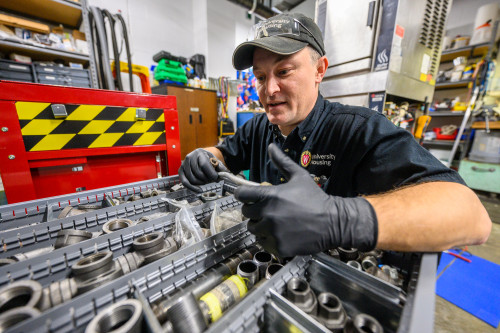
Land looks through drawers of parts to see if he is able to fabricate replacement connector components for his repair work in the basement of Four Lakes Market. Photo: Althea Dotzour
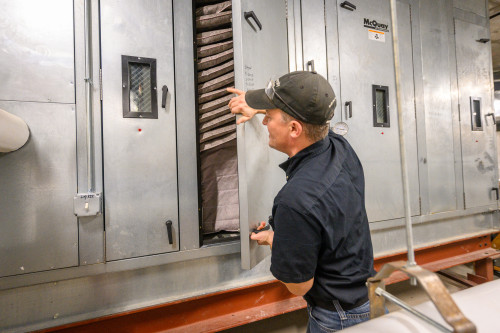
Land checks on the air filters in an air handling unit in the basement of Four Lakes Market. The unit has 27 rectangular air filters, while a normal home furnace has one. Photo: Althea Dotzour
